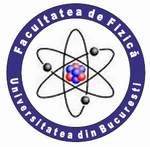| |
 |
UNIVERSITY OF BUCHAREST
FACULTY OF PHYSICS Guest
2025-10-06 0:45 |
 |
|
|
|
Conference: Bucharest University Faculty of Physics 2025 Meeting
Section: Biophysics; Medical Physics
Title:
Analysis of clonogenic capacity, cell viability, and quantification of double-strand breaks in B16 melanoma cells irradiated with high proton dose rates
Authors:
Andreea IONESCU (BAICAN) (1), Decebal IANCU (2), Radu ANDREI (2), Mihai STRATICIUC (2), Mihai RADU (2), Aurel POPESCU (1), Mihaela BACALUM (2)
*
Affiliation:
1) Department of Electricity, Solid Physics and Biophysics, Faculty of Physics, University of Bucharest, Măgurele, Romania
2)“Horia Hulubei” National Institute for Physics and Nuclear Engineering, Măgurele, Romania
E-mail
andreea.ionescu998@yahoo.com
Keywords:
flash proton therapy, cell viability, melanoma, double-strand breaks
Abstract:
Cancer remains a pressing issue in the medical and scientific fields, affecting a large number of people, which led to the development of several personalized treatment methods. A therapeutic protocol, frequently used in cancer treatment, consists in surgical intervention followed by radiotherapy, chemotherapy, and immunotherapy (Paganetti, 2013).
Due to their physical properties, protons offer a high advantage over X-rays and γ-rays in tumor radiotherapy. Recent studies have shown that FLASH radiotherapy, which involves ultra-high dose rates exceeding 40 Gy/s, can reduce radiation-induced toxicity in normal tissues without compromising the therapeutic effect on tumor cells (Matuszak, 2022).
An oncological condition that shows a favorable response to proton radiotherapy is melanoma (Petrovic, 2006). In this study, melanoma cells (B16-F10 cell line) obtained from epithelial tissue of mice with melanoma, were used. These cells were irradiated at the Tandetron particle accelerator with 3 MeV energy, at doses of 1 and 3 Gy, and dose rates of (1,500; 1,000; 250; 50) Gy/s.
To evaluate the effects of high proton dose rates on melanoma cells, clonogenic capacity was assessed after 6 cycles of cell division. Cell viability was measured 7 days after irradiation. At the same time, the double-strand breaks of cellular DNA after the proton therapy were quantified. Additionally, DNA repair time duration were determined by the detection of the gamma H2AX histone.
These findings highlight the great potential of proton therapy, especially at ultra-high dose rates, which enhance cancer treatment by reducing damage to healthy tissue, while maintaining tumor control. Further research into the biological mechanisms and optimization of treatment parameters could lead to improved outcomes for patients affected by radioresistant tumors such as melanoma.
References:
1. Harald Paganetti, Peter van Luijk (2013), Biological Considerations When Comparing Proton Therapy with Photon Therapy, Semin. Radiat. Oncol., 23,77-87, DOI: 10.1016/j.semradonc.2012.11.002
2. Ivan Petrovic, Aleksandra Ristic-Fira, Danijela Todorovic, Lucia Valastro, Pablo Cirrone, Giacomo Cuttone, (2006) Radiobiological analysis of human melanoma cells on the 62 MeV CATANA proton beam, Int. J. Radiat. Biol., 82, 4, DOI: 10.1080/09553000600669859
3. Natalia Matuszak, Wiktoria Maria Suchorska, Piotr Milecki, Marta Kruszyna-Mochalska, Agnieszka Misiarz, Jacek Pracz, Julian Malicki, FLASH radiotherapy: an emerging approach in radiation therapy, Rep. Pract. Oncol. Radiother. (2022) DOI: 10.5603/RPOR.a2022.0038
|
|
|
|

